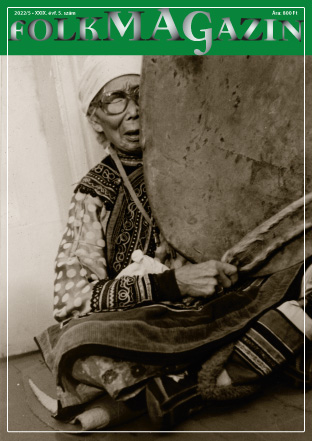Articles by Initial Letters
Metszéspontok és összefonódások (2. rész)
Emlékeim Martin Györgyről
- Issue: 2022/5
- Starting page: 38
- Author: Anca Giurchescu
- =>
Memories of working with Martin György – By Anca Giurchescu – Part 2. First published in: [Transylvanian Hungarian dance and dance research at the turn of the century – II.] Edited by Könczei Csongor. Cluj. 2014. Romanian traditional dance researcher, ethno-choreologist Anca Giurchescu (1930–2015) writes that: the scientific basis of modern ethno-choreology was formulated and solidified thanks largely to the work of Martin György (1932–1983). Martin developed the methods for researching traditional Hungarian dance and influenced certain periods of development of Romanian ethno-choreology. Many research plans formulated by Martin are still valid today. She describes her first visit to a dance house event in 1974 in Budapest with Martin. They had planned more research work together, but a proposal was not only refused by the Institute in Bucharest but Anca was fired from her position there. She worked last with Martin in 1976 at a meeting of ICTM’s Ethno-choreology Study Group. Anca escaped from Romania in 1979, then settled in Copenhagen, Denmark. In her conclusion she lists themes of her conversations with Martin, questions discussed between them and subjects of Martin’s writings – as she put it – “the list is stunning”: The types and categories of solo and group men’s dances (legényes, haidau, botoló), women’s dances accompanied by instrumental music or only singing, couple dances, cycles of dances at various dance events, analyzing the structure of the dances, theory of dance typology and classification, the connection/relationship between dance and music, a dancer’s creative process, dance improvisation, the traditional process, learning and the processes of change, the various connections between the individual and community, the ethnographic regions, the creative strength of especially good performers and their meaning and function in various social contexts, historical layers of the dances in Hungary and in Europe, the connection between dance and politics, using dance as an ethnic symbol, questions arising from researching the minorities, and how traditional folk dance is marketed and modified in the context of stage performance.





